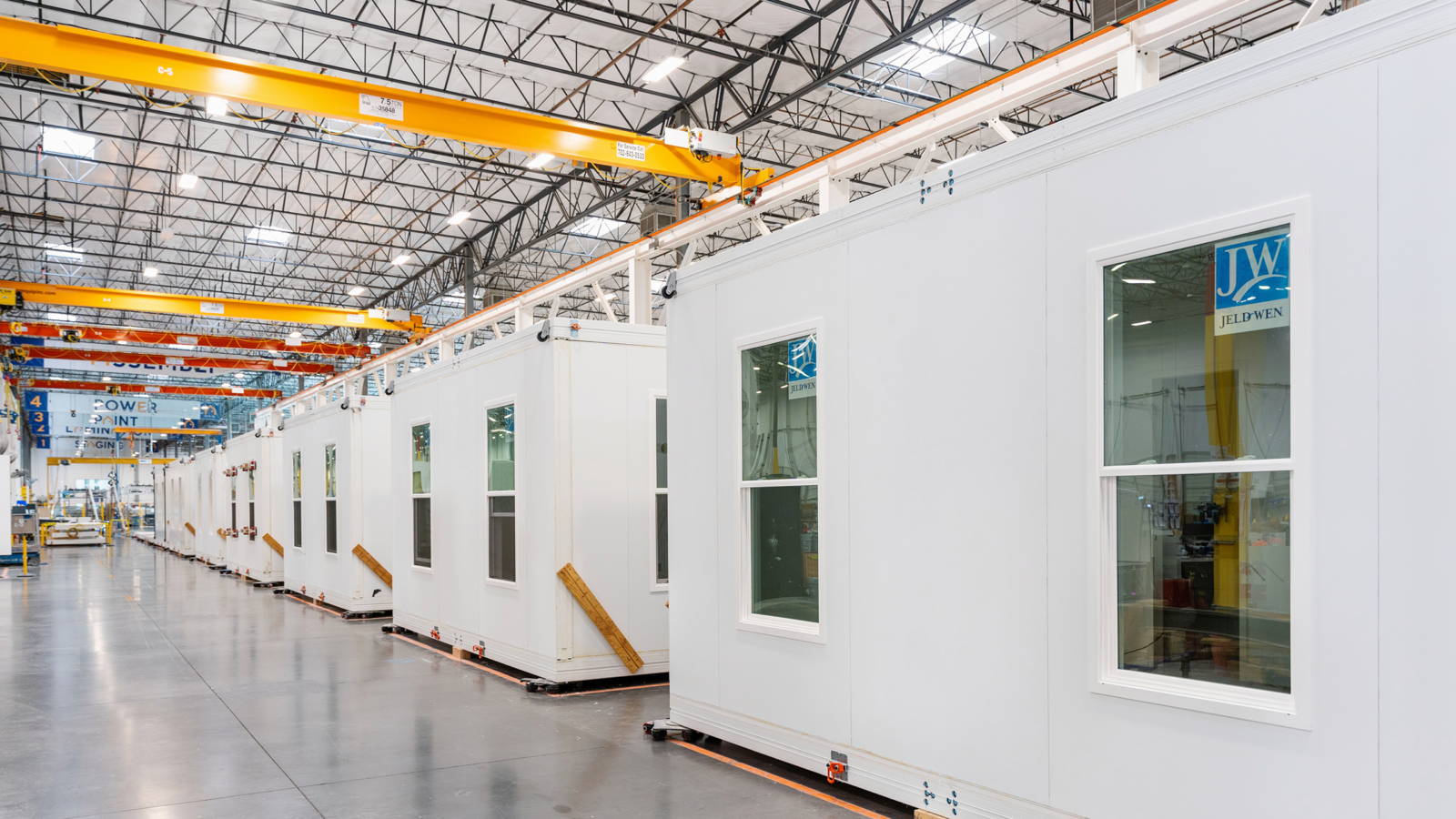Good morning and happy Monday.
The average adult can type about 40 words per minute. ChatGPT can write thousands of words in just a few seconds. At that rate, it’s no wonder the chatbots reach the end of their careers a lot faster, too.
Last week, OpenAI announced that it will soon “retire” ChatGPT-4, after launching it back in March 2023. The text-creator will be “fully replaced” by the younger, faster, sleeker ChatGPT-4o model. For once, we’re starting to empathize way too much with the decidedly not-human artificial intelligence program. We’re wishing you a restful retirement, buddy. You’ve earned it.
Expected M&A Wave Waits for Trump Trade Deals

Coffee’s for closers, and few are willing to pour the java until President Trump takes the first sip.
Tariff-induced uncertainty and related market jitters have stalled what was expected to be a rebound year for mergers and acquisitions, and dealmakers are now reportedly eyeing the second half of 2025 to resume talks.
Make M&A Great Again
Expectations for a revival in M&A activity were heightened in late 2024/early 2025, with dealmakers and industry experts believing that Trump 2.0 would set the stage. An easing regulatory environment would help drive volume and entice financial sponsors to sell older private equity-owned assets so that they can return capital to their investors.
“Two key drivers will be increased activity from financial sponsors selling companies and a more favorable antitrust environment,” Tom Miles, co-global head of M&A at Morgan Stanley, said in a 2025 outlook report published in January. Inflation and interest rates remained wild cards but were moving in the right direction (down) at the start of the year.
The wilder card turned out to be trade policy — the unpredictability of on-again, off-again tariff hikes has eroded consumer and corporate confidence. Institutional loan issuance dampened and momentum behind initial public offerings (IPO) and M&A dissipated.
The number of acquisition announcements in the first quarter of this year declined to levels last seen in the third quarter of 2020 (the thick of the covid pandemic), according to PitchBook. However, the collective value of those deals, $485 billion, was about 15% higher than the 2020 period and showed a slight uptick from the fourth quarter of 2024:
- Elon Musk’s social media platform X’s tie-up with Musk’s AI startup xAI in an all-stock transaction valued the combined company at $113 billion.
- Cloud security platform Wiz found a buyer in Google, which agreed to acquire the company for $32 billion in an all-cash transaction expected to close next year. Both deals rank among the top 30 US transactions announced since 2020, according to PitchBook. They also show a continued appetite for AI.
Harshing the Vibes: Paraphrasing a McKinsey report that explains why trade policy would be disruptive to dealmaking: It’s hard to do math when the numbers keep changing.
Disruption (Finally) Comes To The Housing Market

BOXABL is the home construction company bringing assembly line automation to the home industry. With their patented technology and 53 patent filings, BOXABL believes they have the potential to disrupt a massive and outdated trillion dollar building construction market. And they just reserved the ticker symbol BXBL on Nasdaq*!
Today is the last day to invest in BOXABL on StartEngine.
Market Meltdown Prompts Investors to Ditch ‘Digital Gold’ for the Real Thing
If bitcoin is “digital gold,” investors seem to prefer the real-world variety.
So far this year, the price of the precious metal has climbed about 22% while the cryptocurrency has fallen about 10%. So if it’s not digital gold, what is bitcoin exactly?
Gold Rush
True to its history, gold has been treated like a safe-haven asset as investors flee the sagging stock market and weakening US dollar, climbing to and holding at about $3,200 per ounce. Bitcoin, on the other hand, came into the year riding higher than ever with the arrival of a more pro-crypto administration and the rise of ETFs tracking its price; between October and the end of January, the price of bitcoin soared a remarkable 70% to burst through the $100,000 threshold. As tariffs came and went (and came and went), however, investors treated bitcoin like a riskier asset, sending its price sliding back toward $80,000 heading into April while gold continued its steady climb.
But since “Liberation Day,” bitcoin has experienced a turnaround, climbing 7% from Monday through Friday last week. Bitcoin true believers tend to think that gold leads, and bitcoin follows. Others say, not quite:
- According to a new report from Franklin Templeton titled “When Gold Zigged, Bitcoin Moonwalked,” the digital asset still has more in common with tech equities than gold. In fact, bitcoin held just a 0.3 correlation with gold over rolling 90-day windows, compared to a 0.7 correlation with the Nasdaq stock index.
- In layman’s terms, that means bitcoin tracks much closer to the Nasdaq than to gold. And last week, it undershot broader equities markets: The tech-heavy Nasdaq composite rose nearly 12%, while the S&P 500 rose 8%.
Makes You Fink: In his annual letter to investors earlier this month, BlackRock CEO Larry Fink warned that ballooning government debt could eventually cause the dollar to lose its world reserve currency status, with bitcoin possibly swooping in. “Decentralized finance is an extraordinary innovation. It makes markets faster, cheaper, and more transparent,” he said, before adding a huge caveat: “That same innovation could undermine America’s economic advantage if investors begin seeing bitcoin as a safer bet than the dollar.” This year, interest payments on US government debt will reach $952 billion, or more than is spent on defense.
Record Low Arctic Ice Levels Spur Jockeying for Sea Lane Supremacy
You thought last week’s financial news was chilling?
Scientists at Germany’s Alfred Wegener Institute said earlier this month that sea ice levels in the Arctic reached the lowest level since satellite monitoring began in 1979. The 14.45 million square-kilometer sea ice cover on March 21 was over a million square kilometers below the 1981–2010 average. It raises a reminder that there was a global economic turf war playing out well before tariffs came along.
Stay In Your Shipping Lane
The dramatic March figure is in line with other data that suggest glacier melts are accelerating amid global climate change. For example, NASA reported last month that the global sea level last year rose 0.59 centimeters, considerably more than the anticipated 0.43 cm.
The rapid changes have also unleashed a heated round of territorial jockeying amid countries claiming domain over the global north. Up to three new major international shipping routes could be opened as ice cover melts, shortening journeys between Asia, Europe and North America by 30% to 50% and avoiding the pricey and overcrowded Panama and Suez canals. (A Shanghai-to-Rotterdam trip, for example, could be cut in half from one month to two weeks).
And therein lies the cause of the jockeying: 52% of Arctic territory belongs to Russia, China has eked its way into the region by partnering with Moscow to develop shipping in the 3,500-mile so-called Northern Sea Route, and both countries have recently sent icebreakers on research trips. China and Russia together dominated the record Arctic shipping trade last year, with their 2.9 million tonnes accounting for 95% of cargo, much of it focused on energy. Which is one explanation why a certain Oval Office occupant has pushed for some territorial expansions:
- Behind Russia are Canada with 23% of Arctic territory and Denmark with 17%. The US has just 6% of the Arctic pie, which it holds via Alaska — Vice President JD Vance, you may recall, visited Greenland late last month as the Trump administration continued to push annexation of the Danish territory and Canada (both of which have strongly objected).
- Beyond potential shipping routes, of particular note are the vast energy reserves once trapped under frost — 30% of the world’s undiscovered natural gas and 13% of its undiscovered oil is in the Arctic, according to KPMG. Those energy deposits would be incredibly costly to extract, but there’s more than that: Access to cobalt, graphite, lithium, zinc, copper and nickel reserves in the Arctic has been made easier by global warming while Greenland alone has reserves of 43 out of the 50 “critical minerals” the US considers essential to national security, according to Benchmark Minerals.
Opportunity Amid Calamity: The Arctic is warming at four times the rate of the rest of the world. In December, a team of researchers found the Arctic Ocean could have its first ice-free day before 2030, much earlier than expected, with the median first ice-free day happening within 24 years. In especially somber news, they determined that, while a radical reduction in greenhouse emissions could delay the milestone, it likely wouldn’t prevent an ice-free Arctic at this point.
Extra Upside
- Ma Moto: French bikers are buying up Harley-Davidson motorcycles like mad, having their mid-life crises thrust on them by the prospect of a tariff war.
- Grounded: Frontier Airlines begins cutting flights after demand slowdown in March.
- The Startup Revolutionizing Housing. BOXABL is turning the homebuilding market on its head with a patented process to produce one home every four hours. Invest now on StartEngine at $0.80/share. Join 40,000+ investors before the April 14 deadline.**
** Partner
Just For Fun
Disclaimer
*This is a paid advertisement for Boxabl’s Regulation A offering. Please read the offering circular here. This is a message from Boxabl.
*Reserving a Nasdaq ticker does not guarantee a future listing on Nasdaq or indicate that BOXABL meets any of Nasdaq’s listing criteria to do so.

